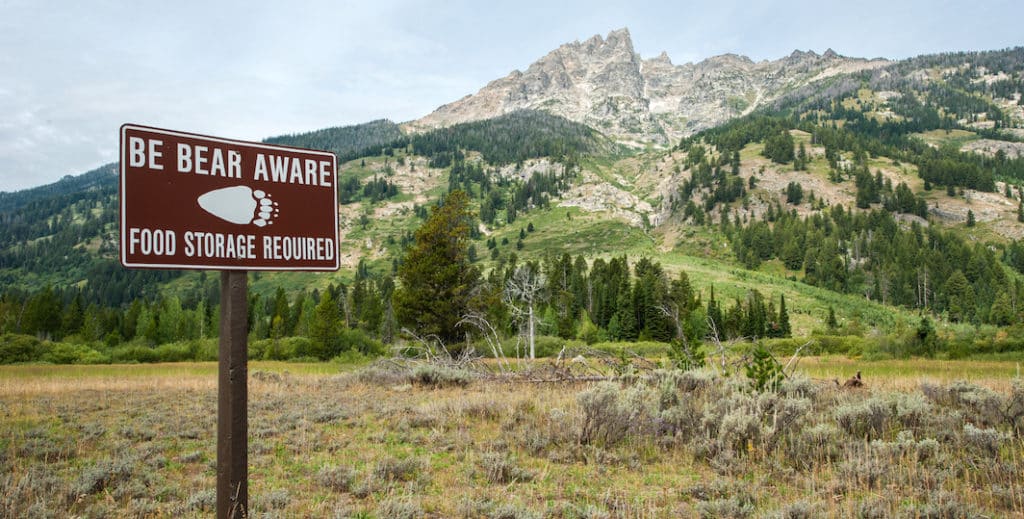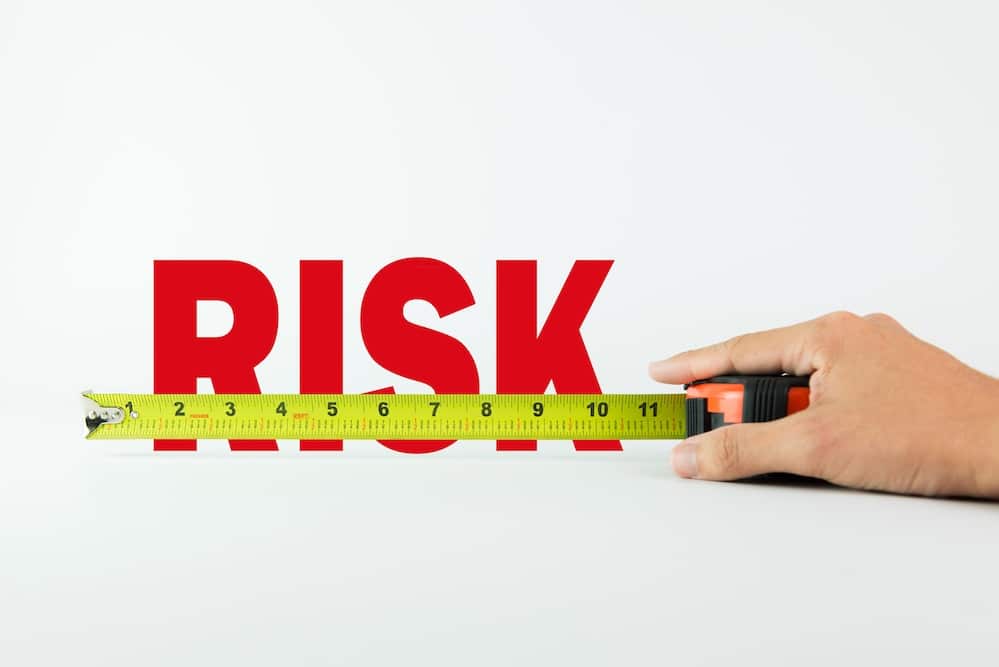Safety in the Backcountry: Deciding When to Bail on a Trip or Adventure
Risk Management“What matters most is how well you walk through the fire.” ~ Charles Bukowski
When it comes to just about every worthwhile pursuit, the more you put into it, the more you get out. In the context of human-powered outdoor adventures, especially those that test your metal, that means pushing the limits and, for those of us who are thrill-seekers, risking life and limb.
Spending time in the backcountry is often more than simply experiencing the great outdoors; it often entails exposing ourselves to, and overcoming, adversity. Through the process, we hone our outdoor skills and build strength, coordination, and character.
Part of the attraction and much of the fun we experience when we engage in extreme outdoor activities such as mountaineering, whitewater rafting/kayaking, rock climbing, skiing, snowboarding, and so on, is the thrill. We choose to expose ourselves to an increased risk of injury or death, because that’s part of what makes extreme sports so much fun.
The secret to success is managing risk and adversity so an outing becomes a thrilling challenge while still preserving life and limb. While we crave an epic adventure that we can live to remember and talk about, achieving the right balance often involves deciding when to bail; when the balance between risk and reward is weighted far too heavily on the side of risk.
Here at The National Center for Outdoor & Adventure Education (NCOAE), we recommend using the following Safety-Fun-Learning Triangle as a guide to achieving the right balance:
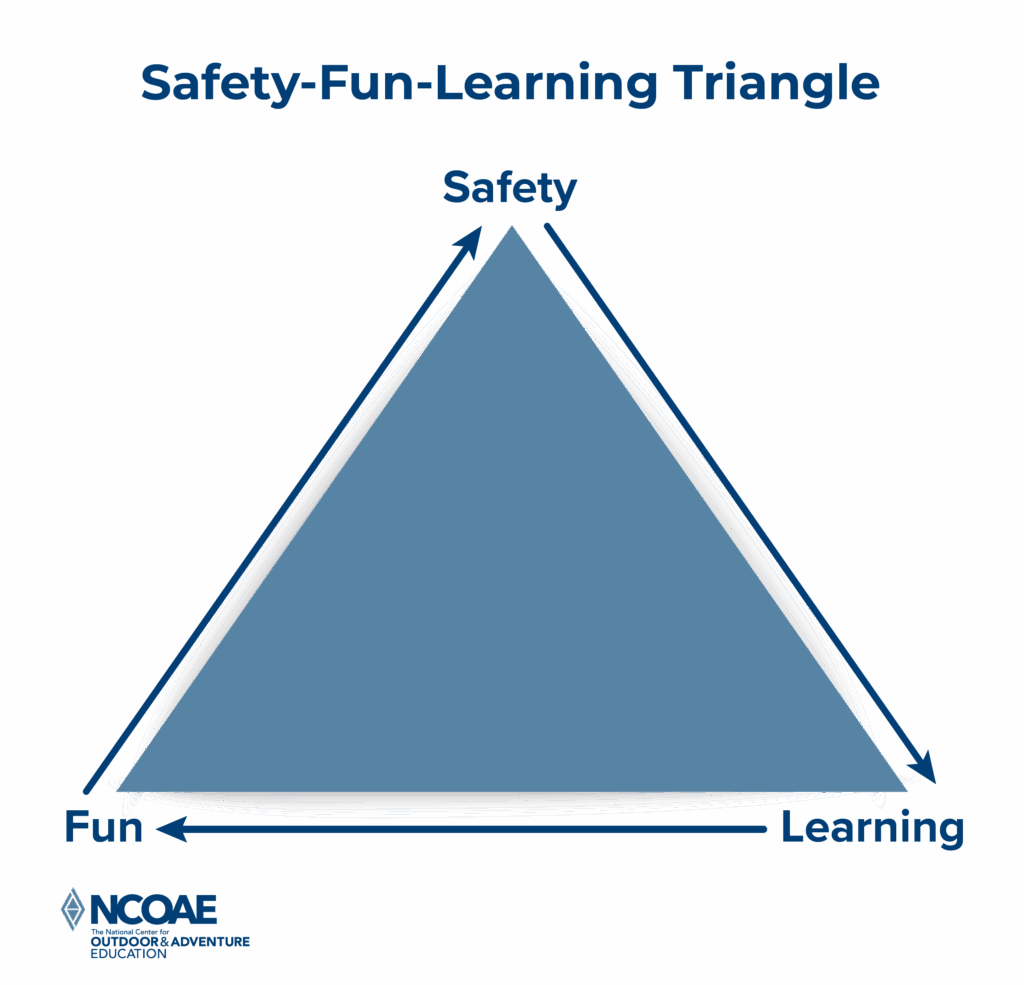
Pre-Trip Bailing
It’s late on a Friday night and the floor is littered with maps, satellite images, weather reports and info I received from reputable sources.
Teeming with excitement, my brain narrows in on the largest, wildest expedition I can put together with the info in front of me. As the early morning hours of the next day approach, I have pared down my list to one or two realistic options (realistic for me).
Regardless of whether I am consciously aware of it, this trip planning I routinely engage in almost always involves pre-trip bailing. I start with “visions of grandeur” (more…)
Improving Safety by Evaluating Near Misses
Risk ManagementThroughout our lives, we develop knowledge and wisdom, in part, by learning from our mistakes and those of others. In the context of outdoor education and adventure programming, we learn from both catastrophic events and near misses — close calls. These are events in which nearly every factor necessary to cause serious injury or death is present but catastrophe is averted due to the presence or absence of one or more conditions.
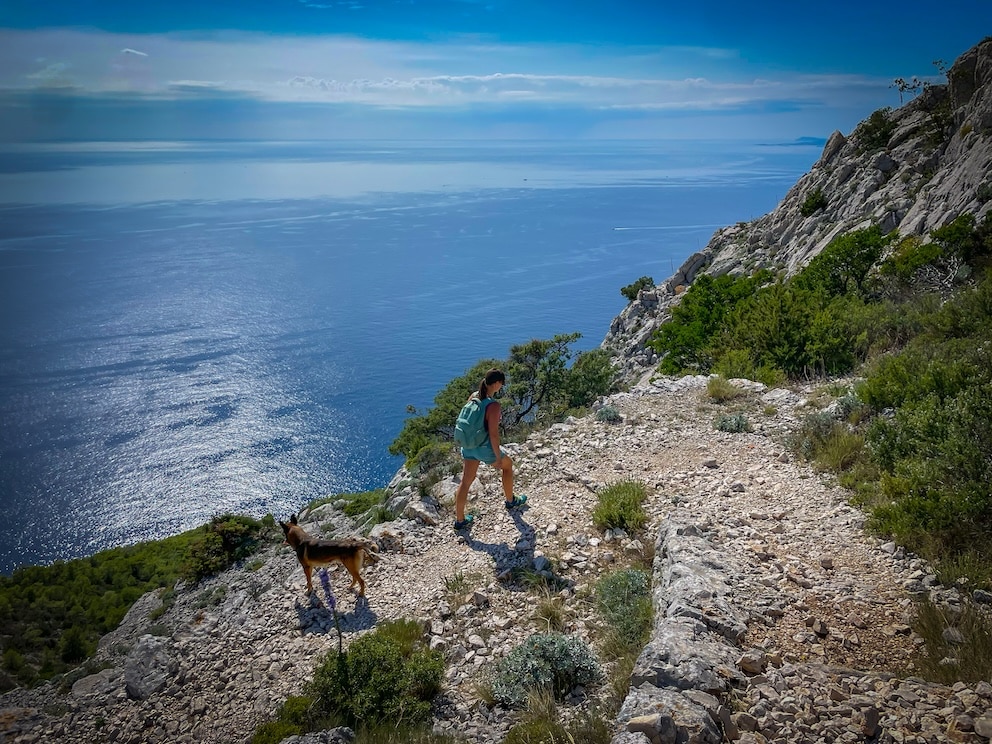
For example, imagine starting a rock climbing route and then realizing, when you’re 20 feet up, that you failed to do a specific knot check. You look down and can’t see the knot because your puffy jacket or a feature on the rock is obscuring your view. You look up and see that you have to climb about 60 feet more feet to reach an area of safety, and you’re unable to let go of the rock to get a better view of the knot, so you decide to descend. Upon reaching the ground, you discover that your knot was only half-tied.
Eventually, you’ll ponder:
- Would you have made it to the top of the climb without falling?
- Would the half-tied knot have held?
- Would a possible fall have resulted in injury?
The possible outcomes are numerous and uncertain, but the near miss is obvious, as is the lesson to be learned — don’t forget to check your knots before starting your ascent.
As Close as the Width of a Slice of Swiss Cheese
You can think of a near miss as being as close to disaster as the width of a slice of Swiss cheese. Why Swiss cheese? Because it has (more…)
Protecting Your Food from Bears and Other Wildlife in the Backcountry
WildlifeOne of the best things about camping is eating, and you’re likely not the only one in the backcountry who appreciates fine camp cuisine. Any bear, racoon, coyote, skunk, possum, or other opportunistic scavenger close enough to pick up the scent might stop by for dinner or a late night snack.
And these moochers aren’t picky. They’ll settle for food, trash, even toiletries like toothpaste and soap. That’s why it’s so important to take precautions to protect your foodstuff — and yourself — from bears and other wildlife that might come calling.
Are bears a major safety concern in the backcountry? Only if you encounter them, and that depends on where you’re spending your time. As explained in our previous post, “Gauging Your Safety in the Wilderness: What’s the Most Dangerous Animal?” you’re most likely to run into bears in remote forested or alpine areas. But you should always be careful whenever you’re in an area bears are known to roam.
Explore Your Food Storage Options
Your type of activity and style of travel will determine the food storage system you choose. Here are several simple food storage options to consider:
- If you’re car-camping, simply return your food and cookware to your vehicle after a meal.
- If you’re at a campsite that provides food storage boxes, you can use one of those.
- If you’re on a paddling trip without any risk of encountering a bear, simply secure your food in a cooler with a good lid.
However, if you’re hiking in the backcountry, you’ll need to take some additional precautions. That means using specific food storage methods such as bear hangs or bear cans, and being intentional about how you arrange your campsite.
Using a Bear Hang
Bear hangs dangle your food bag out of reach of animals. They’re lightweight and require minimal equipment:
- Bear bag or stuff sacks to contain your food and scented items, such as toiletries
- 100 feet of rope or parachute cord
- One or two carabiners
- A weighted object, such as a stuff bag with a rock in it (a heavy carabiner can do the trick)
You can choose from several different bear hang techniques. Here’s the basic One-Tree Method:
- Select a tree with a sturdy branch at least 15 feet off the ground and extending at least five feet out from the trunk.
- Tie one end of your rope to a weighted object, such as a carabiner or a stuff bag with a rock in it, and toss it over the branch.
- Clip the carabiner onto your food bags and pull on the opposite end of the rope until the bags are at least 12 feet off the ground and five feet from the trunk of the tree.
- Tie the end of the rope around the trunk of a nearby tree.
Safety precaution: Be sure nobody is standing in the direction the rope is being thrown or under the area the bag is hung.
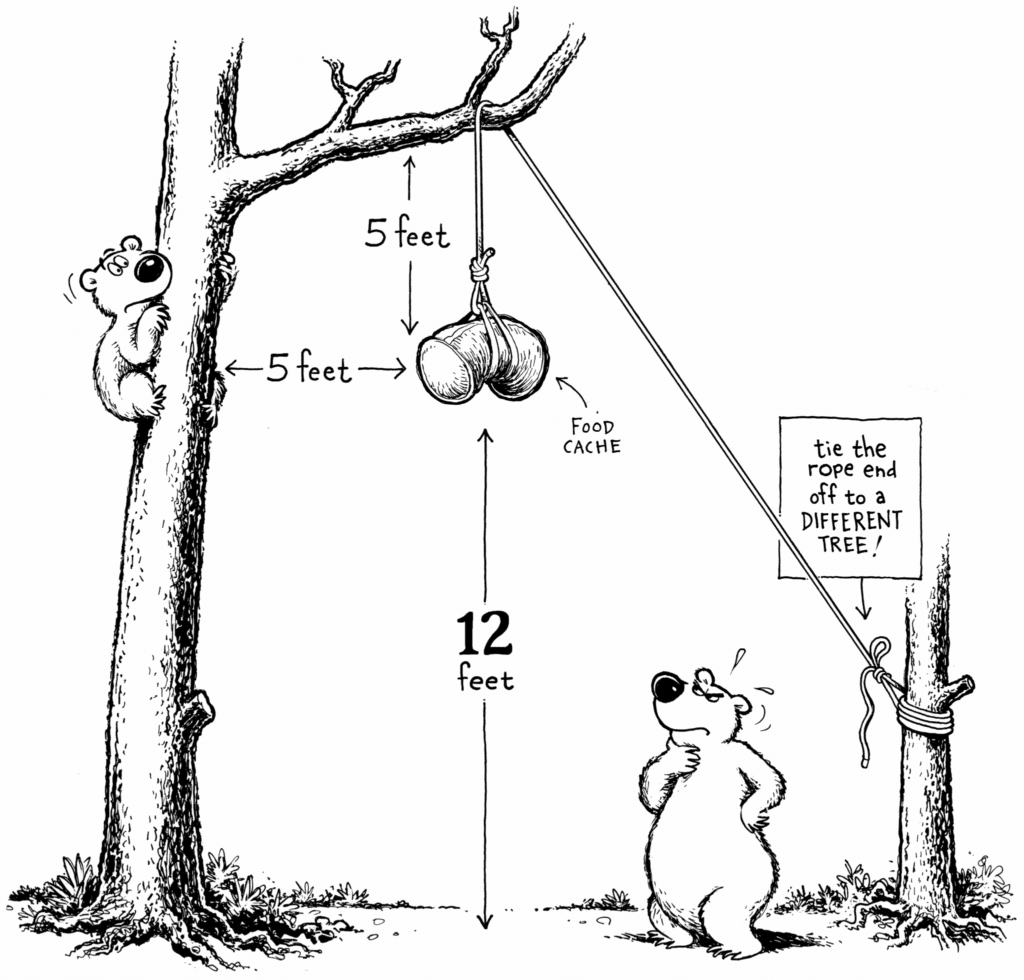
This basic method works well in most areas; however, (more…)
Gauging Your Safety in the Wilderness: What’s the Most Dangerous Animal?
WildlifeWhen wilderness medicine practitioners gather ’round a campfire, one favorite topic of discussion involves which animals are the most dangerous. Barring the obvious winner, we humans, leading candidates typically include the gorilla, shark, lion, tiger, and bear.
The unassuming mosquito and deadly microscopic organisms are often overlooked, but most likely lay absolute claim to the title.
In some parts of the world, the hippopotamus is considered the deadliest creature. Here at The National Center for Outdoor Adventure & Education (NCOAE), we’ve yet to conduct a course where hippos are involved but if we ever do, we will certainly take precautions to make these semi-aquatic animals are not on campus!
Where you are in the wilderness, of course, makes the determination of which animal presents the most peril to hikers, climbers and swimmers. For example, if you’re navigating the Boundary Waters that straddle the border between Ontario, Canada, and Minnesota here in the U.S., you’re more likely to encounter a bear than a gorilla. That’s why traveling to an unfamiliar remote location requires that you research the area to determine the biggest threats to your safety, including wild animals, and discover how best to avoid them and what to do if that doesn’t work.
The good news is that your odds of being injured or killed by wildlife are low, especially if you use common sense to avoid the biggest threats. Most wilderness injuries and fatalities come from falls, weather, and getting lost rather than from animal attacks. And don’t discount the stupidity factor, such as the man who was slapped with jaw-dropping $153,161.25 medical bill after trying to take selfie with rattlesnake.
In this post, we weigh in with our team’s take on the seven deadliest animals you might encounter when trekking through the wilderness in the U.S., along with some basic information to help you gauge your likelihood of encountering them and protect yourself and others in your group. First up, bears!
Bears
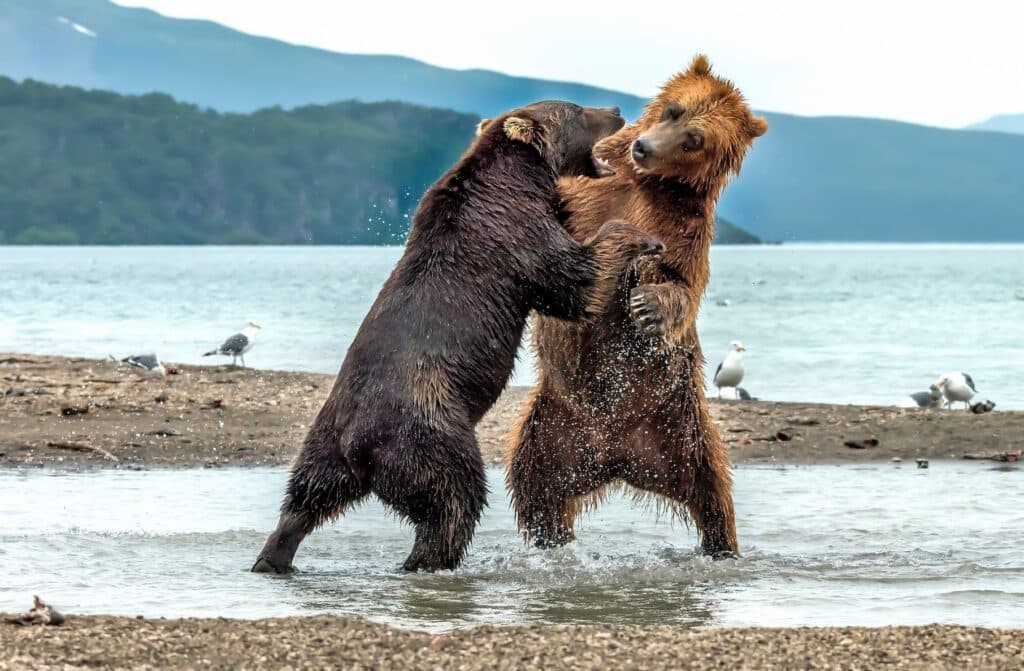
Bears are fast, powerful, and often unpredictable, especially when surprised or protecting their cubs, food, or territory. You’re most likely to encounter them in remote forested or alpine areas. Species include Grizzly bears in the northwest and Alaska, with black and brown bears being more widespread.
To protect yourself (more…)
Choosing Safe, Comfortable Campsites
Backcountry PrepBleary eyed from a scarcity of shuteye, you shimmy out of your sleeping bag, stick your head out your tent flap, and observe your campsite. It’s not a pretty picture. In fact, it looks like you woke up in the middle of a yard sale. Or the tail end of a party turned bad.
There’s gear spread out everywhere, a tarp blown up against a tree, protein bar wrappers discarded by hungry racoons. And now it’s time to pay the piper for last night’s decision for selecting and setting up a terrible campsite.
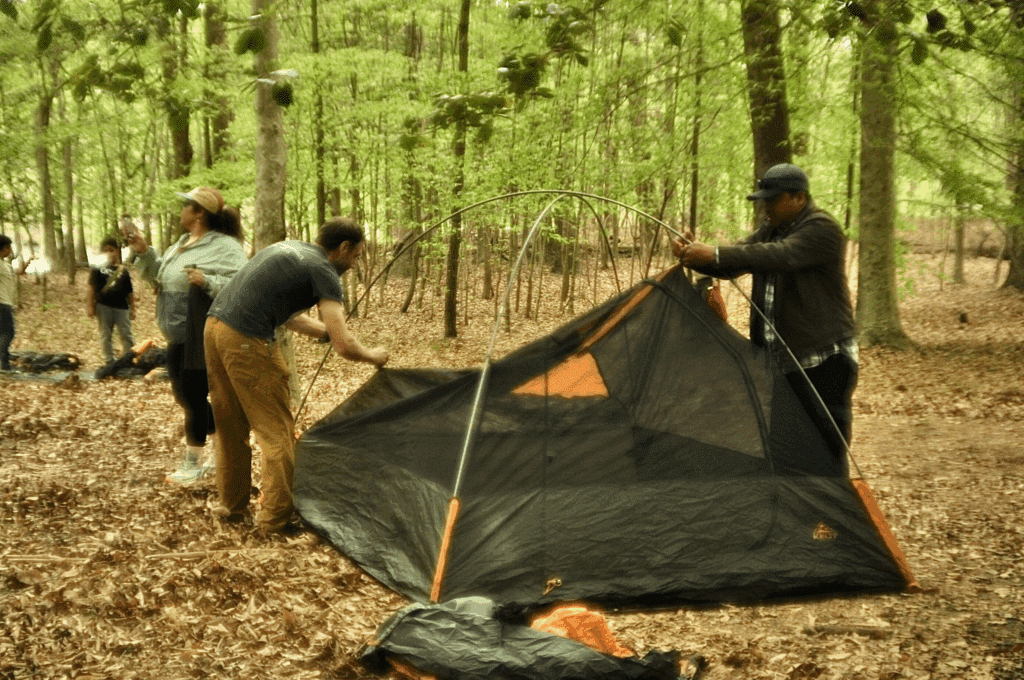
It happens. Sometimes it’s due to unpredictable weather, poor planning, inexperience, or just bad decision making. Fortunately, you can take steps to reduce its frequency. This post explains how, but first, let’s look into the importance of even having a quality campsite.
What’s the Big Deal Over Selecting and Setting Up a Quality Campsite?
Campsite selection, setup, and management aren’t always a top priority. It’s something we outdoor adventurers often do “on the fly,” when the need arises. However, the more thought and planning you put into it, the safer and more enjoyable your camping experience will be.
When contemplating the construct of a up quality campsite, you might want to consider the following factors:
- Safety: Providing protection from the weather and its effects, as well as from natural and human elements and neighboring campers ensures you’re not posing a risk to anyone’s safety.
- Comfort: You need to seek a sheltered area with a patch of soft, level ground to sleep on and an area where you can eat your meals in comfort.
- Efficiency: You should have enough room to organize your food and gear for convenience, and you want easy access to water and places to use the toilet and wash your dishes.
- Ecology: You want a campsite that’s conducive to practicing Leave No Trace (LNT) Principles. For example, try to find an established campsite instead of one that requires clearing vegetation.
Including Campsite Selection in Your Trip Planning
The process of choosing and setting up a proper campsite in a quality location should begin well before you embark on your backcountry adventure. During our pre-trip meetings with groups or during training sessions, we always talk about what makes a good campsite and important factors we need to consider before choosing sites.
When planning a trip and thinking about where you will spend the night, take the following factors into consideration: (more…)
Just the Facts: Recognizing the Importance of Reporting Accurate Information in a Wilderness Emergency
Wilderness MedicineIn the movie Die Hard 2, hero John McLane, played by Bruce Willis, receives a fax at a car rental kiosk at Dulles International Airport in Washington, D.C. informing him of the identity of a suspect. The agent behind the desk, who’s been flirting with McLane through the entire scene, says, “Hey, I close in about an hour. Maybe we can go get a drink?” McLane smiles coyly, points to the wedding ring on his finger, and replies, “Just the fax, ma’am. Just the fax.”

McLane’s line is a reference to the old TV show Dragnet, where the main character, Sgt. Joe Friday, would remind rambling or opiniated witnesses to stick to the facts by saying, “Just the facts, ma’am [or sir]. Just the facts.” That straight-forward statement can serve as a reminder for wilderness medicine providers when we’re responding to accidents or emergencies in remote settings.
In wilderness emergency medicine, collecting and reporting the facts can determine the difference between a positive and a negative outcome, or even between life and death.
Recognizing the Challenges of Reporting Accurate Information in Wilderness Medicine
In wilderness settings, the potential for communicating inaccurate information increases due to several factors, including distance, time lags, layers of patient care providers, and unreliable communication channels, including the absence of cell phone connectivity. First responders frequently face the daunting task of gathering information from people in stressful situations under challenging and changing conditions. In our wilderness medicine course, we teach about the importance of accurate information.
In addition, location information can be difficult to obtain and communicate. Even in an urban setting, first responders can have trouble distinguishing between similarly named roads, such as Bear Hollow Lane and Bear Hollow Road, or roads that have multiple names. In the wilderness, determining and communicating a specific location becomes even more challenging when certain ridges, pitches of a rock climb, or similarly named streams come into play.
Providing accurate and comprehensive information is important for several reasons, including the following: (more…)
Managing Fatalities in Wilderness
Wilderness MedicineIn the safety and comfort of the modern world, we often forget that the natural world can be a dangerous, unforgiving, and uncaring place. For many of us who love wilderness and the backcountry, that’s large part of its attraction.
We choose to explore areas where some fear to go, and we participate in activities that may straddle the line between the safe and perilous. But we do so, backed by best practices and training in wilderness risk management.
Mountaineering, rock climbing, and whitewater rafting can be dangerous undertakings, but even a leisurely hike through the backcountry carries risk. Wilderness emergency examples include entering an area teaming with unpredictable wildlife, crossing paths with a venomous snake, getting swept up in a flash flood, or encountering other unpredictable dangers.

Here at The National Center for Outdoor & Adventure Education (NCOAE), we take many precautions to mitigate the risks. Education, training, planning, and preparation can all limit the risk of injuries and preventable illnesses, and wilderness medicine training can help mitigate the fallout when injuries and illnesses do occur in remote settings.
But when we venture out into wilderness and engage in extreme activities, accidents can and do happen, sometimes the result of life-ending episodes. Unfortunately, we need to be prepared for that, too.
Gauging the Risk of Fatality
A quick check of the American Alpine Club’s periodical Accidents in North America Climbing shows that of 8,000-plus accidents covered over the more than 75 years the club has been gathering data, more than (more…)
What Is Wilderness Medicine?
Wilderness MedicineWhen the average person encounters the term “wilderness medicine,” they typically assume it is referring to the practice of medicine in a remote or harsh environment with little to no access to medical equipment or supplies.
They may imagine a scenario of providing CPR to someone who suffered cardiac arrest during a whitewater rafting adventure or creating a splint out of a branch and a few strands of twine to help a hiker with a sprained ankle become ambulatory.
While these notions of wilderness medicine aren’t far off the mark, they are limited. In other words, close but no cigar. It’s all the above and more, which makes it a challenge to come up with a clear and comprehensive definition.
Teaching Wilderness Medicine at NCOAE
Here at The National Center for Outdoor Adventure and Education (NCOAE), our wilderness medicine courses begin with a discussion of what wilderness medicine is, as well as what each student hopes to learn from the course. Often, these discussions elicit points of discussion that require an even broader definition of the term.

While there’s no universally agreed upon definition of wilderness medicine, certain components set it apart from non-wilderness medicine. For the purpose of this blog post, let’s begin with the following definition:
Wilderness Medicine is provision of medical care when environmental conditions play a stronger role in decision making and interventions than the established systems of care.
Wilderness Medicine encompasses not only the treatment of injuries and illnesses in these settings but also includes preventive measures, survival skills, and the management of environmental hazards such as extreme weather, hazardous terrain, and wildlife encounters.
Wilderness medicine skills and techniques can be applied in a variety of setting, including but not limited to: (more…)
SOAP Notes Keep Wilderness Medicine Clean
Wilderness MedicineIn the context of wilderness medicine, soap and SOAP are both indispensable. An explanation is in order. We’re all familiar with lower-case soap. This noun refers to a substance that’s added to water to remove dirt, grease, grime, and germs from various surfaces, including skin, hair, clothing, pots and pans, and so on.
Soap In The Wilderness
Traditional soap works in two ways — as a surfactant to break water tension, improving water’s ability to penetrate surfaces, and as a molecule that has a love-hate relationship with water. Soap molecules have two ends, one that’s hydrophilic (loves water) and the other that’s hydrophobic (hates water). The hydrophilic end binds to water, while the hydrophobic end binds to anything other than water — dirt, grease, grime, germs. Imagine soap molecules as tiny carabiners that shackle dirt molecules to water molecules to enable the water molecules to usher them away.
In backcountry and wilderness settings, soap plays a vital role in preventing infection and transmission of disease. In fact, scrubbing vigorously with soap and water may be among the most important risk-management technique you practice during your time in the wilderness.
SOAP (Subjective, Objective, Assessment, Plan)
Now let’s move on to the other SOAP — all uppercase — which is an acronym for Subjective, Objective, Assessment, and Plan. As an outdoor educator, field instructor, or wilderness guide, this note-taking procedure is nearly as important as scrubbing your hands regularly with soap and water. This is especially true when you’re dealing with a client injury or illness in a remote setting.
SOAP Notes, which I’ll be covering in this post, separate important information from the chaos and fog of emotion in order to provide clean, uncluttered details for making informed medical decisions and emergency response plans.
With SOAP Notes in hand, field instructors and outdoor educators trained in wilderness medicine, as well as backcountry guides, are better prepared to respond to a medical emergency. They do this by:
- Following an organized, methodical process
- Tracking changes in a patient’s health status
- Keeping a record of assessments, anticipated problems, and any interventions already provided
- Communicating with emergency responders
- Ensuring a seamless transfer of patient care to next-level healthcare providers
- Documenting cases and care for improving organizational outcomes
Here at The National Center of Outdoor Adventure and Education (NCOAE), we developed the SOAP Note form shown below.

Our SOAP Note’s Form
Our SOAP Note form consists of the following seven sections (more…)
Opinion: Instilling an Operational Risk Management Mindset in EMS
Emergency MedicineIn EMS (emergency medical services) education, generations of students have been taught to put safety first. “Don’t enter a scene if it’s not safe,” is what all EMS students are told. “Your safety is most important,” we say. “If you don’t feel safe, get out.”
That being said, there’s another concept called “Safety Third” that’s become popular in recent years, claiming that it’s really up to the individual — not the institution — to ensure their safety on a continual basis. For more details about this, please read Safety is Third, Not First, and We All Know It Should Be in the Journal of Emergency Medical Services, written by our Medical Director, Dr. Christopher Davis, MD.
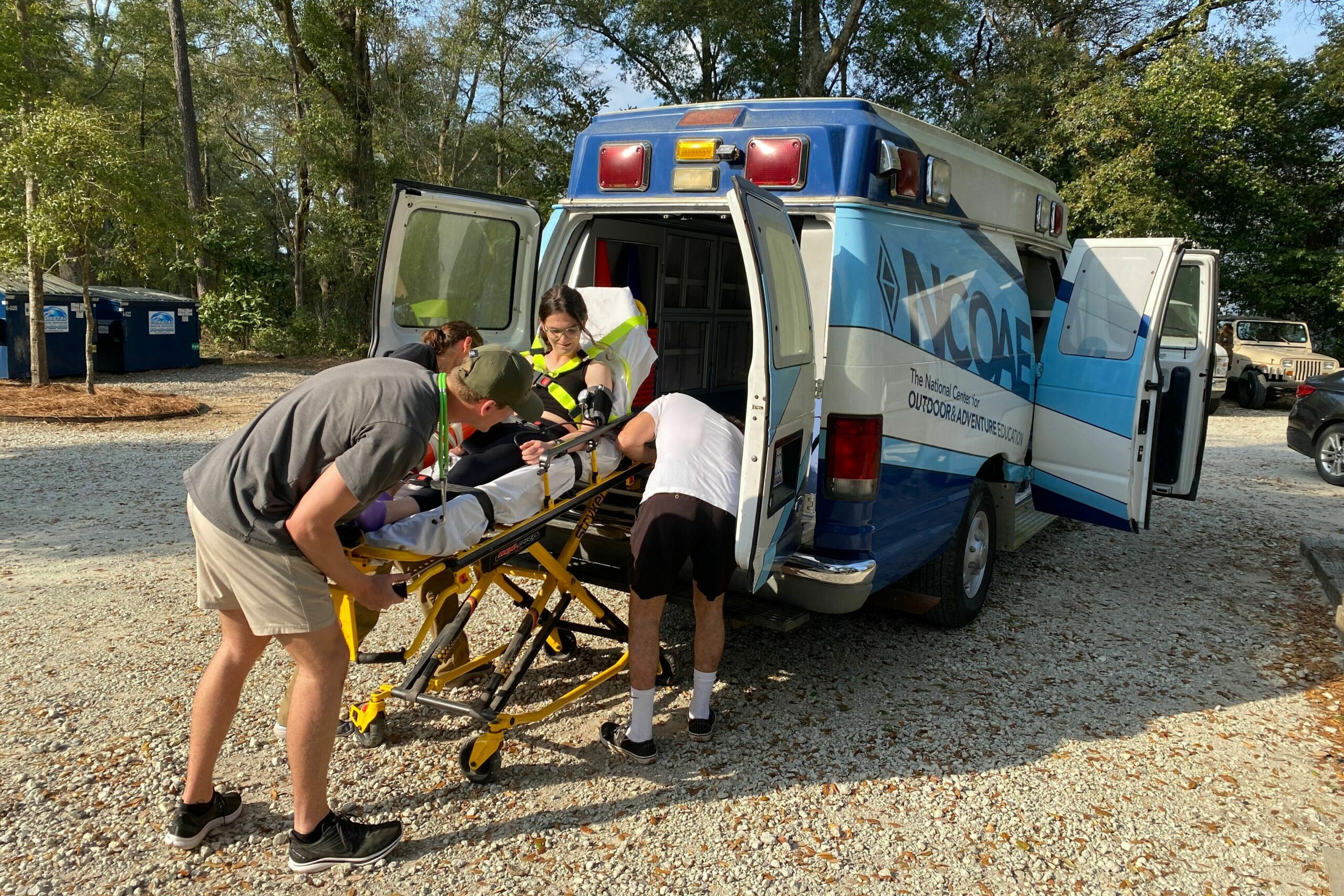
But what is “safe” and why do we put so much emphasis on it?
Personally, I think even the notion of chatting about “safety” leads us down the wrong path. Instead, we should be discussing risk management and decision making. Let’s face it. Absolutely nothing in EMS is “safe.” Emergency services personnel respond on a near-daily basis to situations that the regular population is unable (or unwilling) to handle. Why, just the simple act of driving an ambulance can be unsafe. Again, nobody becomes an EMT (Emergency Medical Technician) because they’re desperately seeking a safe career.
Most emergency healthcare providers will agree that “safety” is not really our focus. Whether they realize it or not, every EMT or paramedic who spends more than a few shifts in the field will develop their (more…)
Heat Illness: Symptoms, Prevention, and Treatment
Medical TrainingNobody likes to be hot and sweaty on the trail. But when things turn from being uncomfortable to becoming downright dangerous, it’s time for quick, on-the-spot emergency action.
Heat illness is a range of medical conditions that result from the body’s inability to cope with an elevated heat load. When that occurs, it is more commonly referred to as “heat strain.” And whether you’re inactive in a warm, humid environment or participating in strenuous physical activity in the fall or winter, you are at an increased risk of heat illness.
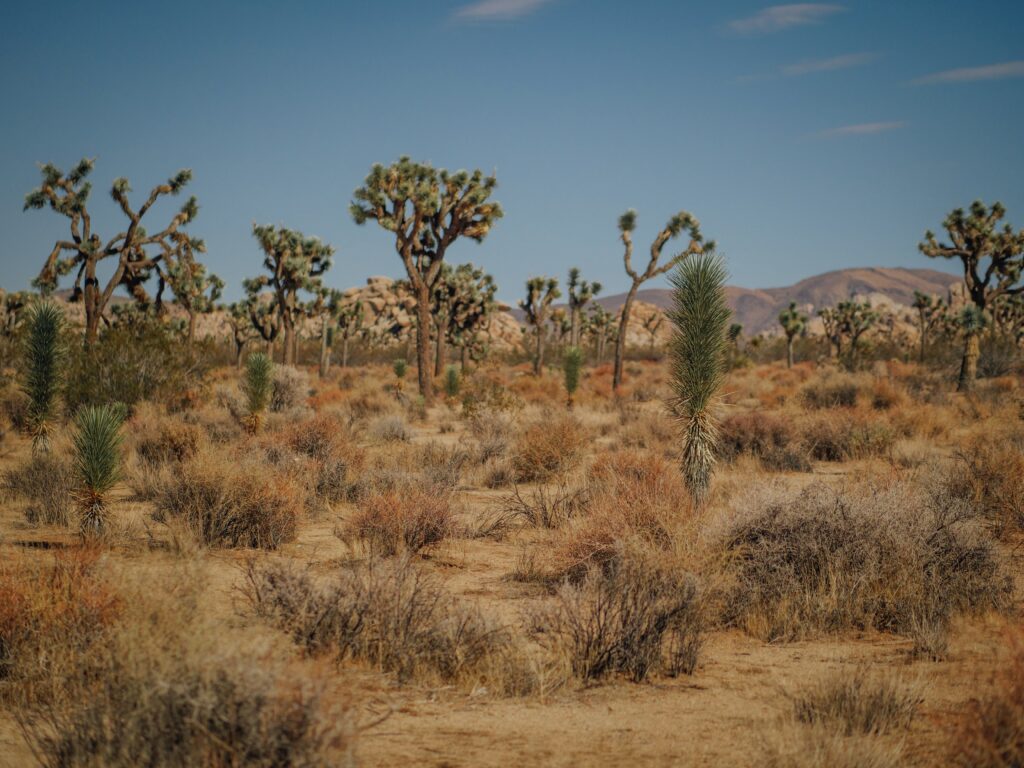
For people who engage in backcountry adventures, heat illness and heat strain are among the many potential health and safety risks. That’s why our instructors at The National Center for Outdoor Adventure Education (NCOAE) include it in our Wilderness Medicine courses. In this post, we bring you up to speed on the basics, including the symptoms to watch for, preventive measures, and treatments to cool an overheated body.
From Bad to Worse on the Heat Illness Spectrum
Heat illness, heat strain, and related injuries occur when the core body temperature becomes elevated, stressing or surpassing the body’s ability to cool itself. Like a nuclear power plant, the human body can suffer serious and potentially fatal damage when its core becomes overheated.
The severity of the condition is on a spectrum generally divided into the following three levels: (more…)
Concussion Recognition and Treatment in the Backcountry
Wilderness Medicine TrainingConcussion recognition and treatment has gotten a lot of attention over the last decade, mostly in the context of youth and professional sports such as tackle football and soccer. It’s even a topic for those who serve in our armed forces. However, confusion over its prevention, diagnosis, and treatment remains widespread.
In an interview with a reporter from the Chicago Sun Times, former National Football League quarterback Brett Favre, who was knocked out cold only once in his 20-year career, claimed that “probably 90 percent” of the tackles he endured left him with a concussion.
He’s most likely correct in that estimation. After all, the definition of “concussion” is broad: “A concussion is a brain injury, a disturbance in brain function induced by traumatic forces, either from a direct blow to the head or a transmitted force from a blow to the body.” It disrupts brain function at the cellular metabolic level but does not result in major structural damage. Conventional MRI or CT scanning will not show evidence of a concussion.
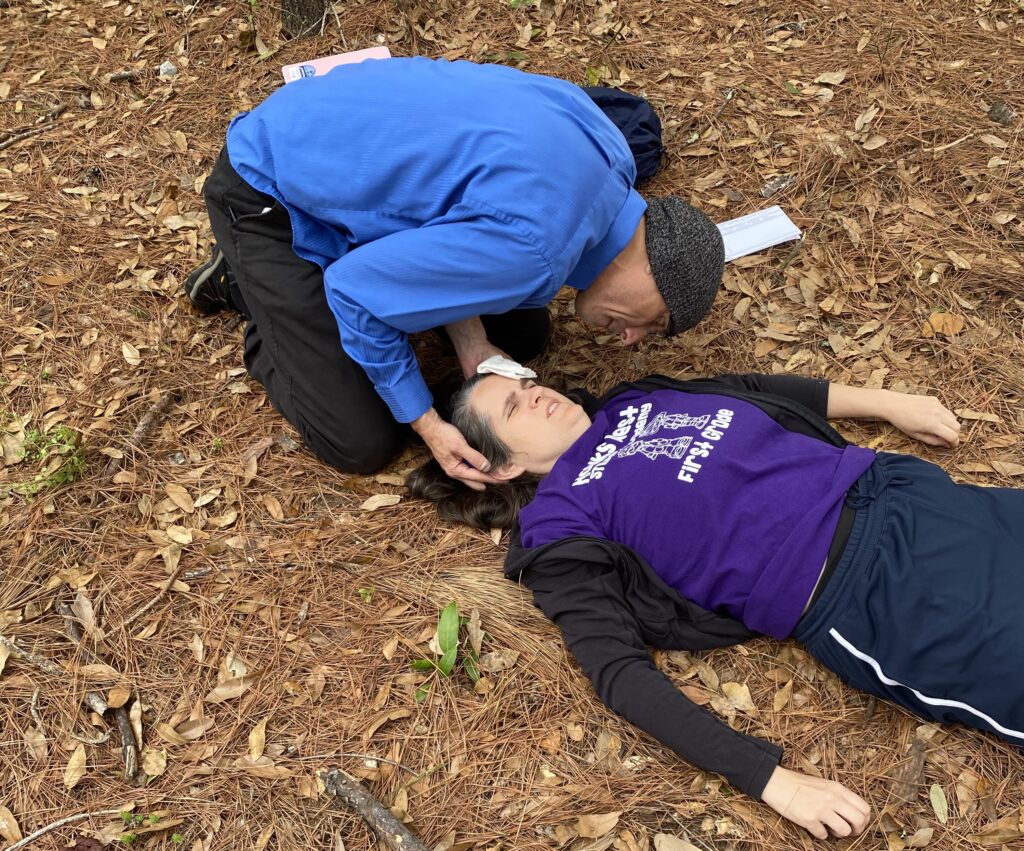
So, how do you know if you or someone else has suffered a concussion while in the backcountry? And, after having made that determination, what should be done? Having clear answers to these two questions is essential for successful recovery and to prevent long-term cognitive and psychological complications. This is true no matter where the concussion takes place, but especially in the backcountry where medical treatment from a full-time team is unavailable. (more…)
Avoiding Target Fixations and Incident Pits in the Backcountry
Risk Management“Look where you want to go!”
I have conveyed this message to wilderness course participants countless times, shouting, screaming, and using hand signals when necessary. Sometimes I’m yelling above the roar of a set of rapids or the sound of an adjacent waterfall.
“Look where you want to go!”
I emphatically issue the same advice while watching climbers rappelling down a cliff, or verbally guiding a student on a mountain bike through a sketchy section of trail. In each case, the point of my shouting is to get the students to stop looking at the obstacle.
“Look where you want to go” really translates as “Stop looking at the obstacle! Don’t fixate on the hazard!”

And it doesn’t matter if you’re a Wilderness First Responder approaching the scene of a backcountry incident, or a student on a wilderness course attempting to navigate a perceived hazard or obstacle, looking too closely at a hazard you want to avoid can be very dangerous.
At first glance — no pun intended — you might think it wise to actually look closely at the hazard you want to avoid. No argument there. You absolutely need to identify obstacles, especially in the backcountry and other places considered Wilderness. In fact, identifying an obstacle is a key factor in remaining safe.
But here’s the thing: (more…)
Using Collective Impact to Forge a Path Forward with Coronavirus
NCOAE RecommendsBecause of the situation with COVID-19, we’ve been thinking a lot lately about the path forward for outdoor and adventure-based programs like the ones we offer here at The National Center for Outdoor & Adventure Education (NCOAE). Specifically, how do we operate in a day and age where physical distancing is either required or strongly recommended? That’s where Collective Impact may come into play.
The concept of Collective Impact takes into consideration the notion that industry players need to coordinate their efforts and work together in order to create lasting solutions to shared and common societal challenges and problems.
Put simply, collective impact is a structured form of collaboration. The term garnered national recognition in 2011 when it was touted by the White House Council for Community Solutions as a powerful framework for solving social issues. The concept became so popular that “collective impact” was selected as among the top philanthropic “buzzwords” for that year.
With the current conundrum of coronavirus facing our world today, we here at NCOAE are of the opinion that solutions for COVID-19-related issues from any qualified source is worth considering. And, if you or your organization is of the same mind, we would love to hear from you. We can listen to each other’s challenges and maybe we can help each other discover solutions to those problems associated with operating an outdoor and/or adventure-based program in the time of coronavirus.
Since this crisis evolved in mid-February, we have been working up schedules and then reworking them. And, because our work crosses into many sectors — including schools, businesses, and government agencies — and because we deal with multiple states and international borders, we find ourselves dealing with a lot of moving parts.
The good news, of course, is that our staff has evolved to become a finely tuned machine. We’re able to juggle a lot and do it well. But that still leaves us wondering how the greater outdoor and adventure education industry may be grappling with the same or similar challenges as we’re contending with.
As most successful adventurers and explorers do, we set out to do some research. And here is some of what we’ve discovered so far: (more…)
When Wildlife Interferes with Our Love of the “Wild Life”
Backcountry PrepEven if you’ve never participated in scouting, you probably know that “Be Prepared” is the Boy Scout Motto. It’s a maxim that still holds true for today’s outdoor enthusiasts — perhaps more so than back in 1908 when founder Robert Baden-Powell adopted it for the scouting movement.
Baden-Powell wrote that Boy Scouts in the field should consider beforehand, “any situation that might occur, so that you know the right thing to do at the right moment and are willing to do it.” He also oddly mentioned that the motto was founded on his initials (BP), but that’s neither here nor there.
The point is this. It has been estimated that more than 8 billion people visit protected “wild places” each year — areas that encompass national parks, national forests, and wildlife areas in the United States and around the world. What that means is more people are heading outdoors, which results in more people coming into direct contact with wildlife.
And that’s not always a good thing. As the signs illustrating this post show, more and more of us are introduced to the backcountry and wild places with posted warnings concerning the “fulltime residents” of these remote and natural areas.
On Cape Cod beaches, for example, there are (more…)
Reducing Backcountry Risk Requires Planning and Assessment
Risk ManagementHere’s an outdoor educator’s nightmare: You’re walking through the woods and you spot a bunch of teens climbing barefoot on a rocky cliff leading to water. Other inexperienced campers clumsily tend a campfire that is about to get out of control. Still others in this group stand waist-deep in a river, oblivious to the fast-moving water just feet away, or the possibility of divers above them.
You look around and there doesn’t appear to be any adults, instructors or guides at this nightmarish campsite. What’s wrong with this picture?
First off, if you’re a professional outdoor educator or backcountry guide, you’re probably tempted to walk in amongst this mayhem and ask these youngsters what group they’re with and then ask them what it is they think they’re doing?
The Practice of Risk Management
Here at The National Center for Outdoor & Adventure Education (NCOAE), we take risk and site management seriously. To us, it’s far more than just a (more…)
TALK TO US
Have any further questions about our courses, what you’ll learn, or what else to expect? Contact us, we’re here to help!

